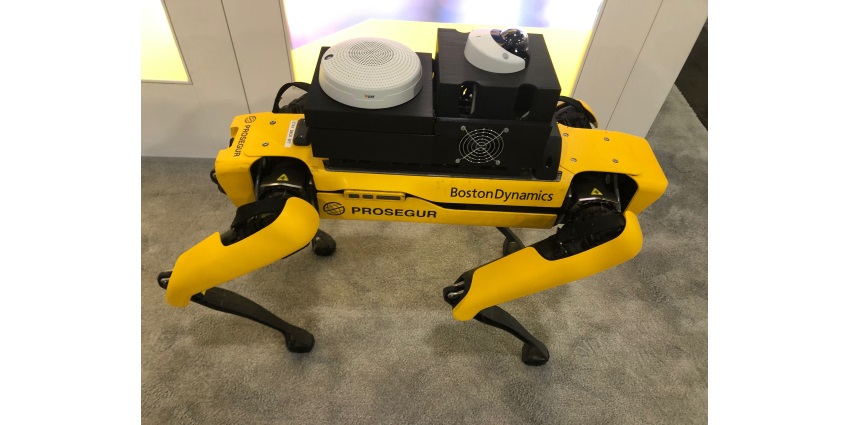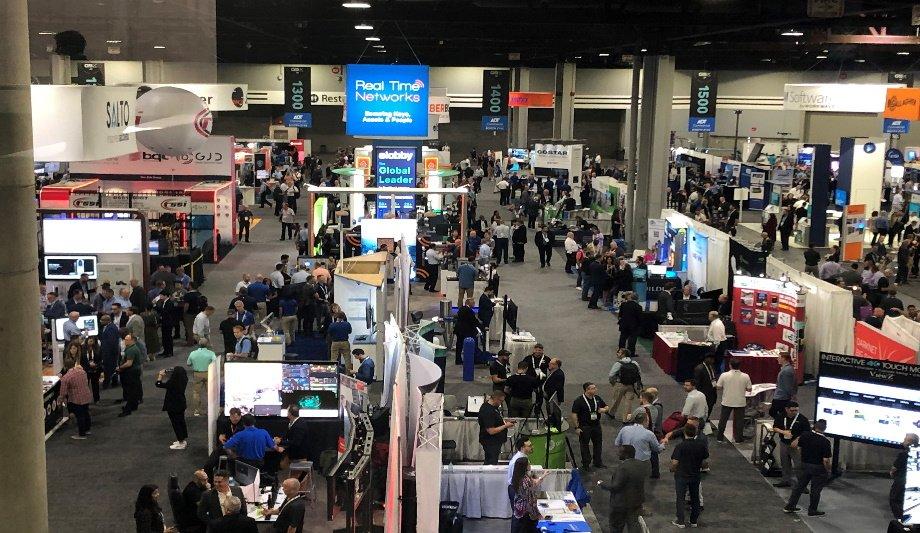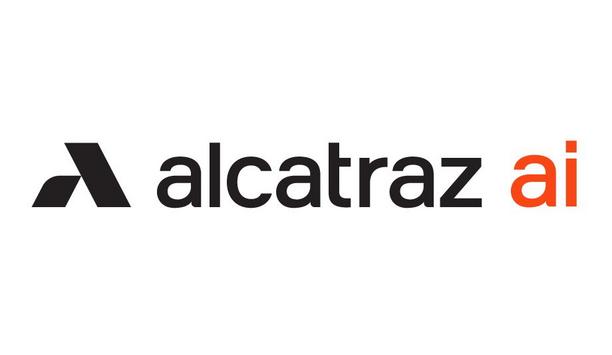GSX 2022 this week in Atlanta highlights the changing role of security in the enterprise. The role of the security director increasingly will encompass facets of cybersecurity as well as physical security.
Transitioning to an operation that incorporates both disciplines requires a workforce that embraces education and building new skills. Education and the opportunity to build new skills are evident everywhere at GSX, including in the hundreds of education sessions and also in the knowledge shared on the show floor in the exhibit hall.
Risk-based decisions
“I really just do physical security.” That used to be a common phrase in the industry, but no more. In addition to ‘upskilling,’ security practitioners also need to speak the language of business and to insert the concepts of security into that language. Fast changes in security are challenging today’s professionals to keep up. The GSX education sessions seek to meet the need.
Embracing ESRM includes a complete change in the thinking and approach to security
Among the topics at the GSX conference is ESRM (Enterprise Security Risk Management), a security approach that focuses on risk-based decisions and partnerships with asset owners. It’s an approach that requires a holistic view of security risk. Embracing ESRM includes a complete change in the thinking and approach to security. Rather than seeking ‘approval’ for security decisions, security professionals identify risks and possible mitigation strategies and present them to management.
Shaping access control
Activity in the exhibit hall was brisk on the first day, which was heartening to those who attended a vastly downsized show last year in Orlando. At this show, there is even carpeting. Trends lead the lively discussions at GSX. In a presentation on the show floor Monday, manufacturer Brivo shared top trends that are shaping access control. The trends include:
- Hybrid work is here to stay. Some 60% of respondents to a Brivo survey said access control is extremely or very important to the hybrid work model. Providing immense value to an organisation, access data helps to manage occupancy and is part of the larger discussion of facility utilisation.
- Data analytics is ‘mission critical.’ Combining data from multiple sources, including access control, becomes powerful when leveraged using artificial intelligence (AI) and machine learning tools. Applications such as anomaly detection help companies improve operations. Some 65% of respondents to the Brivo survey say integrating access control with other technologies is an important trend.
Keeping people healthy
Other trends identified by Brivo include mobile credentialing and security centralisation (cloud)
Other trends identified by Brivo include mobile credentialing and security centralisation (cloud). Among other exhibitors, Johnson Controls is focusing in their booth on solutions, not products, including the convergence of physical security into the digital space. The OpenBlue system is a digital platform that incorporates security, HVAC, fire/life safety, and building operations in a single platform that is the ‘nerve center’ of an organisation.
Increasingly, the areas ‘security’ is responsible for are expanding. During the COVID pandemic, for example, security had to embrace a role in keeping people healthy (as well as safe). The challenges of the pandemic accelerated the OpenBlue portfolio as more security professionals expanded their role.
Security operations centre
“Moving into the digital space, and digitising what used to be a security operations center, enables us to increase automation and enable security operations to respond more quickly,” said Kenneth Poole, Johnson Controls’ Vice President, National Accounts, North America Building Solutions.
Security directors are responsible for things they have never been responsible for before"
“Surprisingly a lot of customers are being forced into new areas,” Poole added. “Security directors are responsible for things they have never been responsible for before.” Poole says he is encouraged by the willingness of ‘old school’ security directors to embrace the new reality. Azena’s approach to supplying edge-based camera applications on an ‘app store’ is gaining momentum. Several new applications are being announced at GSX, among the 110 apps on the Azena app store. Apps can be loaded onto Azena-enabled cameras manufactured by Bosch, Hanwha, Vivotek, BST, TopView, and Ability.
Video management system
Azena has simplified the integration of its app solutions, enabling developers to make only slight changes to an app and ensure it is compatible with the largest video management system (VMS) platforms, including Milestone, Genetec, and NX Witness. A wizard on the camera enables simplified mapping of data analytics to events in a VMS system.
New applications in the Azena app store include video sensors to prevent ‘bed fall’ accidents in hospitals and healthcare facilities, incidents that can cost $35,000 on average and account for $34 billion in the United States in a year. The app identifies video signs of an imminent bed fall, such as excessive movement in bed. The analytics run inside the camera and the video feed doesn’t leave the device, so there are no privacy concerns.
 |
| An Azena app is installed in a camera mounted on ‘Yellow,’ the ‘robot dog’ manufactured by Boston Dynamics |
Effectiveness of metal detectors
Another new application is gun detection that can augment the effectiveness of metal detectors. Also, an Azena app is installed in a camera mounted on ‘Yellow,’ the ‘robot dog’ manufactured by Boston Dynamics and configured for security applications by Prosegur. An Azena app is installed in a Vivotek AI box on the back of the dog; it can detect fire, smoke, and moved luggage.
Azena apps for flare and leak detection are becoming more popular in the oil and gas industries, and there are camera apps that can monitor tank levels. Cisco Meraki is introducing two new camera models at GSX, with 4K and 4MP options, a terabyte of storage for 4K, and 256Gb of storage for 4MP.
Air quality sensors
The cameras will allow most customers to record 30 to 90 days of video in the camera at the edge
The cameras will allow most customers to record 30 to 90 days of video in the camera at the edge. Also at the show, they introduced a push button and air quality sensors that are easy to incorporate into a Cisco Meraki application.
Cisco Meraki also offers a dashboard that is integrated with the rest of the product portfolio to enable users to view devices on the same interface and in the same ‘pane of glass.’
For physical security users, there is the Meraki Vision Portal, which enables physical security users to run a more effective investigation. Features include a floor plan view and the ability to switch among multiple cameras. Users can instantly search videos using ‘motion search’ to easily find an event in a video.








